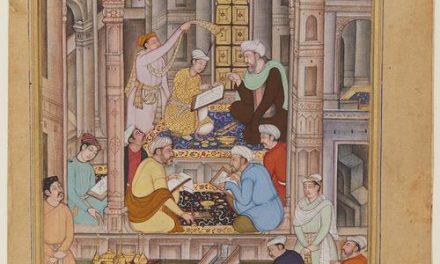Do you ever remember being both awestruck and confused while viewing an artwork? Well this is exactly what happened to me as I stood before a stunning large format work by the National award winning artist Mahasundari Devi. The painting was one of the key highlights from the Indian folk and tribal art auction held by Saffronart.
The ‘kohbar’ painting forms one of the five discrete styles of Mithila or also popularly known as Madhubani painting along with Kachni, Bharni, Godna and Tantric. Practiced in one of India’s most densely populated states, Bihar, this art form is known for its vibrant imagery. Though initially these paintings were made on walls, with changing times however, these soon found their way onto paper, canvases and even cloth. Gods and goddesses namely, Rama, Krishna, Lakshmi, Saraswati, Shiva and Durga, from the Hindu pantheon are popular religious icons depicted in the works. Upon learning more about this art form, one realizes the several layers of meaning the painting carries. The ‘kohbar’ or ‘puren’ was painted on the walls of the ‘kohbar ghar’ or the nuptial chamber of a newly married couple.

The walls of the ‘kohbar ghar’ were one of the most vibrantly painted sections of the household and the vivid imagery painted on these walls was said to be auspicious for the couple to consummate their marriage and to lead a good sexual life in the future. Differently positioned groups in society have fundamentally different viewpoints and produce different cultural constructions; yet all engage in meaning-making of their own constructions and of one another’s. I have tried to highlight the key ideas that I have read on this subject. The sacred union of the bride and groom is depicted by the central motif, six circles drawn around an elongated structure with another circle at the centre. The elongated structure has two faces drawn on either ends symbolic of the masculine and feminine energy. While some versions (based on the Indian caste system) of the ‘kohbar’ paintings have faces drawn inside the circles (Kayastha version), others are meticulously designed with several patterns (Brahmin version). The elongated structure is suggested to represent a phallus. Another school of thought suggests that the central motif of the ‘kohbar’, is a lotus plant (upper section of the painting) representing the female while the bamboo grove (lower section of the painting) represents the male. The lotus and bamboo are considered symbolic of growth and fertility by the practitioners of this art form. The elongated structure is meant to represent the stem which roots the lotus leaves at the bottom of the pond. The pond is also a source for other symbols of plenty: birds, fish (symbols of fertility), the tortoise (symbol of love), snakes (symbol of
divinity), ants, worms, leaves and blossomed flowers.

These symbols appear in and around the composition of ‘kohbar’. Surrounding the central motif are several scenes complimenting the theme of the painting (to the right of the central motif in vertical order): box-like structure decorated with betel leaves (this was meant to be an auspicious seat for the gods and goddesses to sit on and bless the married couple), groom arriving on an elephant, moon, sun (described as witnesses to the act of marriage) and the bride arriving seated on a palanquin.

The narrative of the complimenting scenes is then continued to the left of the central motif in vertical order: the bride and groom getting married, repetition of the box-like structure decorated with betel leaves, fish (symbolic of an incarnation of Vishnu), Krishna seated on the branch of a tree, playing the flute for his love Radha, Shiva sitting cross legged with a coiled snake around his neck (Shiva’s symbol ‘Lingam’ of the phallus represents his reproductive power), a bull is shown next to Shiva (Shiva’s guardian bull Nandi is said to be symbolic of sexual energy and fertility) and the bride leaving for the groom’s house seated on her palanquin while the female members of her family look on. The negative space is densely illustrated with flora and fauna, ornately patterned borders, crossed and straight lines heightens the vibrancy of the painting. A betel leaf creeper borders the painting and is symbolic of loyalty, love, marriage and good fortune. A plethora of imagery in the painting, makes it both symbolic and mystical.
My awareness level on the subject made me realize the oblivion many of us live in when it comes to knowing about indigenous art or also popularly known to as ‘folk and tribal art’-there have been many debates regarding the use of this terminology but let us save that discussion for another day!




Recent Comments